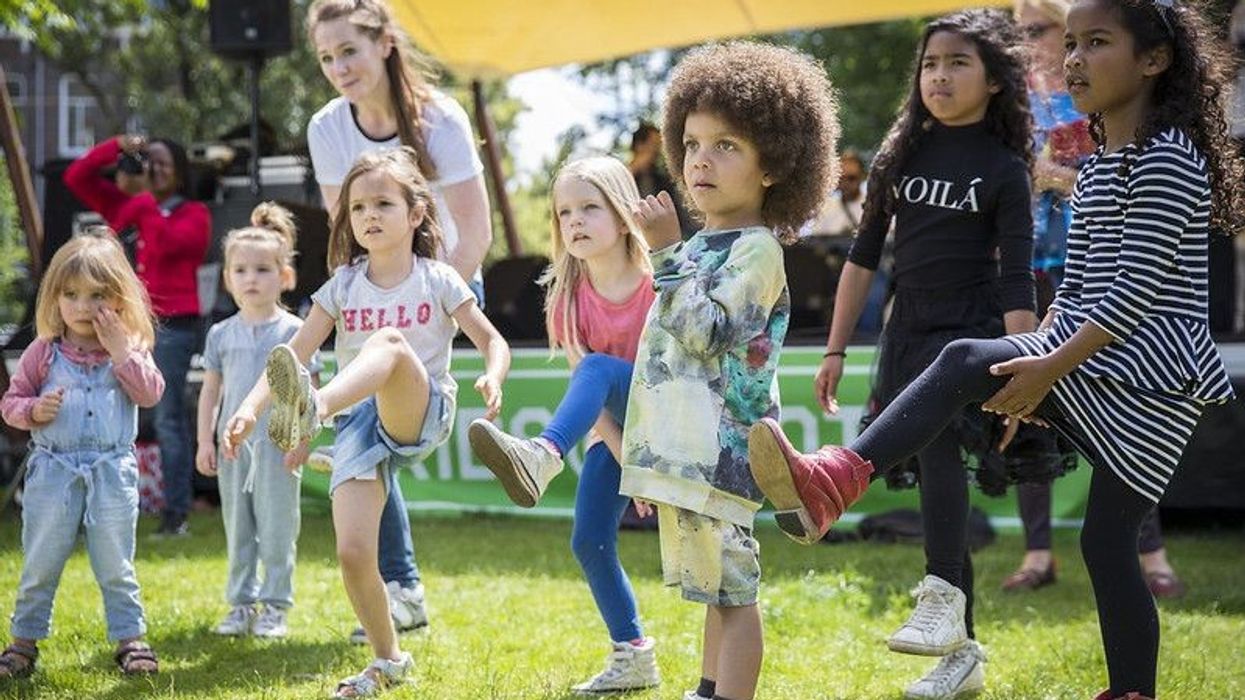As summer gives way, the pace changes, signalling families to gear up for the back-to-school season. It's when school supplies lists get checked off, and children bubble over with excitement for new academic ventures, the joy of reconnecting with friends, and the prospect of meeting new ones.
Movies often capture the essence of this transition with tales of unforgettable school adventures, reminding us that every student has the chance to make this academic year uniquely their own.
This period also brings to the forefront a list of activities and preparations, with teachers setting up classrooms and students exploring what the next grade has in store. Things become interesting as the anticipation builds, with every detail from the classroom layout to the first day's outfit carefully planned.
For parents, this time is about more than just school supplies, it's a phase of active participation in their children's education, offering support and guidance as they move from the relaxed tempo of June and summer to the more disciplined structure of schools and college life. This transition can significantly affect the attitudes and success of youth, highlighting how important it is for kids to be positively involved and interested in their school journey.
Rekindling Classroom Connections

The beginning of a new school year is much more than just a return to academic routines; it's a chance for students to reconnect with their classmates. This period is filled with anticipation as kids look forward to reuniting with old friends and making new ones. Parents can significantly contribute to this aspect of their children's school experience by encouraging conversations about friendship and inclusivity.
Suggest to your child the importance of being open to new friendships and the qualities of a good friend. Offer advice on how to start conversations and share personal experiences about making and maintaining friendships to help them feel more at ease. Additionally, organizing playdates or small gatherings can be a wonderful way for your child to strengthen bonds with classmates before the school calendar kicks in.
This effort to foster connections is not just about enhancing social skills but also about building a supportive network that can enrich your child’s school experience and provide a foundation of friendship that supports both academic and personal growth.
Embracing The Educational Excitement
Education lies at the heart of the back-to-school season, offering a fresh start for both students and teachers. This is the time for everyone to dream big about the year ahead, setting the stage for new academic endeavors and discoveries. Parents can contribute to this sense of excitement by engaging in conversations about the new topics, subjects, and projects awaiting their child.
Find out which subjects spark your child’s curiosity and discuss how you can explore these areas together. If they're excited about science, consider doing a fun experiment at home. If history is their passion, a trip to a museum could be both educational and thrilling. These activities not only support classroom learning but also show your child that education can be a thrilling adventure, fueling their interest in discovering new things.
By connecting educational content with real-world experiences, parents can help transform learning into a journey of exploration and excitement.
Preparing For The First Week Wonders
The first week of school is crucial for setting the tone for the year. As a parent, you can help your child by creating a routine that transitions them from the freedom of summer to the structured environment of school life. Discussing the upcoming school day schedule, from the morning routine to homework time, and practicing it a few days before school starts, can make this adjustment smoother.
Visiting the school to get a look at the new classroom and, if possible, meeting the teacher beforehand can also be very helpful. Becoming familiar with the new surroundings can ease some of the nervousness associated with the first day of school, making your child feel more at ease and confident in their new setting.
Navigating New Academic Adventures

Each new school year is a journey filled with academic adventures and challenges. Parents can play a key role in this journey by being involved in their child's school life and keeping in touch with their teachers. Make it a point to attend events like back-to-school nights and parent-teacher conferences; this is essential to keeping up with your child's academic progress and understanding what is expected of them throughout the year.
Encouraging your child to view challenges as chances to grow is also important. Show them how to tackle difficulties with a positive attitude and remind them that it's okay to ask for help when they need it. This mindset not only builds resilience but also fosters a love of learning that will benefit them long after their school days are over.
Balancing Books And Play
While academics are important, it's essential to maintain a balance between schoolwork and play. Encourage your child to participate in extracurricular activities that interest them, whether it's sports, arts, or clubs. These activities provide a much-needed outlet for creativity and energy, and they play a role in your child's overall development.
Parents should also ensure that their child has enough downtime to relax and recharge. Establish boundaries around screen time and create spaces at home where your child can unwind and enjoy leisure activities.
Cultivating A Collaborative Spirit
School is not just about individual achievement; it's about collaboration and teamwork. Encourage your child to work with their peers on group projects and to be supportive of their classmates. Teach them the value of listening to others' ideas and the importance of contributing to their own.
Parents can model this collaborative spirit by volunteering at the school and participating in community events. This involvement shows your child the importance of being an active member of their educational community.
Fostering A Love For Literature

One of the best ways to prepare for the school year is to foster a love for reading. Set aside time each day for your child to read or for you to read together. Visit the library and let your child pick out books that interest them, and talk about the stories and characters.
Reading not only improves literacy skills but also stimulates imagination and empathy. It's a habit that can provide comfort and joy to your child throughout the school year and beyond.
Encouraging Educational Enthusiasm At Home
The learning doesn't stop when the school bell rings at the end of the day. Parents can encourage educational enthusiasm at home by creating a dedicated space for homework and study. Equip this area with the necessary supplies and make it a welcoming environment for learning.
Help your child develop study habits that will help them in their education. This might include creating a homework schedule, breaking down assignments into manageable tasks, and celebrating their accomplishments.
Tackling The Transition Together
Transitioning back to school is a team effort. Talk with your child about any concerns they have and work together to find solutions. Whether it's worry about a new school or nervousness about making friends, your support and understanding can make a big difference.
Set aside time each week to check in with your child and discuss how things are going at school. This open dialogue will help you stay connected with your child's experiences and provide them with the reassurance they need.
Reflecting On The Summer's Stories

As the new school year approaches, take time to reflect on stories from the summer. Talk with your child about their favorite memories from the break and how they can carry that positivity into the school year. This reflection can help your child appreciate the experiences they've had and look forward to creating new ones.
Encourage your child to share their summer adventures with their friends and teachers. This sharing can be a great way for your child to connect with others and bring a piece of their summer into the new school year.
Anticipating The Academic Year Ahead
As the first day of school draws near, anticipation builds. Discuss the upcoming year with your child and the goals they hope to achieve. Whether it's improving in a particular subject, making new friends, or trying out for a team, setting goals can give your child a sense of purpose and direction.
Parents can help their children visualize success and plan the steps needed to reach their goals. This forward-thinking mindset will empower your child to take charge of their education and make the most of the school year.
Celebrating The Start Of Something Special
Finally, celebrate the start of the school year as a milestone in your child's life. Whether it's a special breakfast on the first day or a note of encouragement in their lunchbox, these small gestures can make a big impact.
FAQs
How can I help my child transition from summer to the school routine?
To ease the transition from summer to school, start adjusting your child's bedtime to the school schedule a few weeks before school starts. Discuss the upcoming changes and what the school day will look like, including wake-up times, meal times, and homework routines. Organize school supplies and set out clothes the night before to streamline mornings.
What should I do if my child is anxious about going back to school?
Listen to your child's concerns without judgment and validate their feelings. Encourage them to express what specifically worries them about going back to school. Offer support by discussing past challenges and thinking about solutions together. If needed, consider reaching out to school counselors or teachers for additional support.
Can I homeschool my child if I'm not comfortable with the school's reopening plan?
Yes, you can choose to homeschool your child. If you decide to do so, make sure to inform the appropriate school district administrators and understand the legal guidelines for homeschooling in your state, which may include curriculum requirements and testing.
How can I support my child academically during the school year?
Stay engaged with your child's education by maintaining open communication with their teachers and staying informed about their progress. Help them organize a dedicated study space at home and establish a consistent homework routine. Celebrate their academic achievements to encourage a positive attitude towards learning.
What can I do to help my child make new friends at school?
Encourage your child to participate in school activities and clubs that align with their interests, as these are great opportunities to meet like-minded peers. Teach them conversation starters and role-play social scenarios to build their confidence. Remind them to be themselves and to be kind, as friendships often form naturally through shared experiences and mutual respect.
How can I ensure my child stays organized throughout the school year?
Help your child develop organizational skills by using planners or digital calendars to keep track of assignments, tests, and extracurricular activities. Encourage them to set aside time each week to organize their school materials and backpacks. Regular check-ins can also help you identify any areas where they might need additional support or resources.
The back-to-school season is a time of new beginnings and endless possibilities. By approaching it with enthusiasm and preparation, parents can help their child embark on this journey with excitement and confidence, ready to write their own unique story in the year ahead.
Related Articles Around the Web













